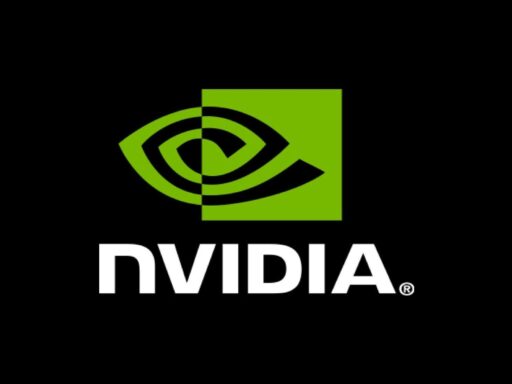You’ve probably heard it already: “Just go see a doctor.”
But for thousands of gig workers across NYC—rideshare drivers, delivery cyclists, freelancers—it’s not that simple.
Health insurance is more of a gamble than a guarantee.
You take jobs on demand, hustle long hours, and suddenly you’re choosing between paying rent or getting a check-up.
That’s not just frustrating. It’s dangerous.
New kinds of healthcare tools, powered by AI and built for your schedule, are starting to flip that script.
Think: quick online diagnosis, personalized health plans, apps that track your symptoms before they become symptoms.
It’s not some tech buzzword obsession. It’s survival.
Let’s bust open the system that’s been ignoring gig workers, and show you exactly how AI tools are stepping up where traditional insurance hasn’t.
Healthcare Challenges Facing NYC’s Gig Community
Most people don’t realize just how exposed gig workers are when it comes to healthcare.
About one in four gig workers in the U.S. has no health insurance. That’s not a trend; that’s a warning sign.
Add this to the pile: nearly half say their coverage has gotten worse since they joined the gig economy.
No employer benefits. No dependent coverage. No HR hotline when stuff hits the fan.
Here’s why that matters:
- Freelancers often juggle inconsistent income, making monthly premiums a luxury.
- Flexible hours? Sure. But that means missing a shift costs money—in cash, not just time.
- Many plans just don’t fit the real-world needs of part-time drivers or delivery workers.
NYC might be packed with hospitals, but that doesn’t mean access is equal.
Some neighborhoods are care deserts—overcrowded ERs, long wait times, and barely any family clinics.
One Uber driver I spoke with from the Bronx told me he drives past eight urgent care centers just to find one that takes walk-ins without insurance.
And when coverage is spotty, small issues turn big fast.
Preventive care becomes nonexistent, and minor infections turn into hospitalizations.
The result? Sick workers powering a healthy economy.
Redefining Health Access Through AI Diagnostics
Now let’s talk solutions—and not the kind that require you to sell your car to see a specialist.
AI diagnostic tools are changing how gig workers get treated, starting with the basics: speed and cost.
Need a checkup at 2 a.m. after a 10-hour shift? There’s an app for that.
Too sick to drive but not sick enough for the ER? Smart symptom-checkers can guide you toward the right next step.
These tools don’t just replace in-person visits—they rethink them.
Customized symptom tracking, AI-powered triage, predictive analysis—available on your phone, in English, Spanish, and more.
Take predictive imaging for example. With AI diagnosing health conditions from uploaded photos or scans, you can catch something like a tumor 18% sooner than with human-only screenings—according to a JAMA-validated study.
When detection gets faster, treatment gets better. Simple.
Here’s a snapshot of how AI tech stacks up to traditional systems:
| Tool Type | Impact | Example |
|---|---|---|
| Symptom Checkers | Up to 85% triage accuracy | HealthBot, powered by Google’s MedLM |
| Imaging Analysis | 40% faster detection time | Paige AI for pathology scans |
| Telehealth Integrations | 28% fewer ER visits | eMed Health AI chat support |
Apps like Babylon Health are now live in NYC neighborhoods, offering gig workers mobile access to basic care—no waiting rooms, no insurance requirements.
Smart pop-up clinics are launching in Bronx and Queens, blending AI consultations with community-led care.
And it’s not just about hardware. It’s personalization.
The AI tracks your history, learns your pain patterns, adjusts suggestions.
For overworked gig workers juggling back pain, fatigue, and a mountain of ignored coughs—this feels like having a real, responsive system finally on your side.
Serving Underserved Communities With Smart Tools
Healthcare deserts aren’t just a rural problem. You’ll find them in neighborhoods across NYC.
Where traditional systems fell short, AI tools are stepping in.
In Brownsville, for example, gig workers are using bilingual AI chatbots to understand care treatment options—free, fast, and without risking a shift.
Instead of burning hours figuring out if a rash is serious, workers can text a bot and know within minutes if they need in-person help.
Digital care is finally matching NYC’s digital hustle.
Even better? It’s cheap.
Some tools cost less than a cup of coffee per use.
Why? Because AI doesn’t need a receptionist, a waiting room, or a parking structure.
And unlike your neighborhood clinic, it never closes.
When you add it all together, AI triage tools aren’t a luxury.
They’re a working-class solution—built for the driver on their fourth back-to-back trip.
Built for the bike courier hoping a sore throat doesn’t wreck their week.
And built for the millions of independent workers who just need one more layer of protection.
Deep Dive: AI Tools Optimizing Gig Worker Healthcare
Ask any NYC rideshare driver what stands between them and a doctor’s visit, and you’ll get the same answer: time. Followed quickly by cost. That’s where AI healthcare tools are stepping in — not with fancy promises, but with tangible, tested fixes that fit the schedules and stress levels of gig workers who can’t afford to pause.
AI Assistants for Personalized Care
AI is no longer a backroom tool for researchers — it’s now a tap away on smartphones. Platforms powered by symptom-checking algorithms and real-time diagnostic engines are becoming the go-to for NYC-based gig workers managing everything from sinus infections to chronic migraines between Uber pickups.
Imagine a bike courier checking persistent wrist pain on an app during downtime. The app, fueled by large medical datasets, evaluates symptoms and delivers an 85% accurate triage estimate within seconds — that’s not sci-fi, that’s happening now via MedLM-powered systems and similar AI-first engines.
Notably, virtual AI chatbots deployed in apps like eMed Health are shrinking emergency room reliance. These bots guide users through symptoms, suggest treatment timelines, and even flag red flags — all while slashing wait times and preventing unnecessary panic. For the uninsured, that’s not just helpful — that’s healthcare access.
Telehealth for Urban Gig Workers (Smart Clinics and Remote Health Models)
NYC’s urban gig workforce doesn’t work 9-to-5 — neither should their healthcare access. Enter AI-powered telehealth. For many NYC drivers balancing triple shifts and kids at home, in-person appointments feel like a luxury. But now, healthcare comes to the backseat — literally.
Smart clinics, paired with remote health consultation models, allow gig workers to log in before their next fare. These sessions don’t just offer convenience — they offer flexibility that mirrors gig work unpredictability. Think of it as a medical stoplight system: green means back on the road with confidence, red means schedule a deeper look, all decided by AI-enhanced screenings.
Several platforms now leverage AI to triage issues and direct workers toward urgent or delayed care based on availability — notably useful in NYC healthcare deserts where facilities are overloaded and walk-ins are turned away.
Mobile and On-Demand Checkups Revolutionizing Healthcare
For app-based workers, traditional healthcare scheduling is a nightmare — that’s why mobile-first AI health is spreading fast around NYC boroughs. Drivers are already familiar with using apps for routes, ratings, and daily earnings. Layer in AI checkups between rides, and suddenly, health management becomes as frictionless as tapping “accept fare.”
eMed Health’s app, which cuts clinical draft times in half through chatbot-collected pre-symptom reports, shows how AI trims the fat from bloated systems. It boosts both worker productivity and medical precision.
For gig workers lacking traditional insurance, these on-demand tools offer near real-time diagnostics without draining their budget or their time. That means fewer missed shifts and more proactive care — two things gig workers desperately need when illness doesn’t sync with their schedule.
AI Addressing Urban and Minority Care Disparities
Gig Worker Health in NYC’s Urban Environment
You don’t have to go far in NYC to hit a healthcare gap — in some neighborhoods, it’s literally the next block over. Minority gig workers feel the burn the most, especially when clinics close early or only offer English-first intake forms. But AI is stepping up in these zones, not with promises, but with pop-up solutions.
AI-driven mobile clinics are popping up near transit hubs and driver hotspots. Built to be nimble, these units handle walk-ins and schedule AI-enhanced diagnostics alongside multilingual tech interfaces. Workers who once put off care because they “didn’t have time” now get seen on the same day — no ID checks, no paperwork drama.
Telemedicine pods equipped with real-time language-translation AI are especially making waves in Bronx and Queens communities, where immigrant gig workers often avoid hospitals entirely. Language isn’t just a barrier — it’s a reason people never seek preventative care. These tools remove that risk.
AI-Driven Urban Care Infrastructure
It turns out that where gig workers cluster — near hubs like LaGuardia or outer-borough shopping zones — is exactly where AI mapping systems are focusing resources. Predictive models track app usage heatmaps and optimize the locations of mobile clinics, nurse shifts, and supply drops.
Beyond geography, AI is helping mega-clinics avoid burnout by forecasting patient flows and staffing gaps. In pilot projects mirroring NYC’s density, AI successfully reduced patient wait times by automating specialist scheduling. This kind of smart scaling doesn’t just ease stress on workers — it keeps the entire system from collapsing under urban load.
Affordable Consultation via AI Diagnostic Apps
No insurance? No problem — that’s the bold idea behind AI healthcare apps changing the equation in high-cost cities. A typical in-person consultation in NYC can top $120 without coverage. AI-first apps slash that by over 70%, thanks to automated triage, referral matching, and symptom prediction engines.
For Black and Latino gig workers disproportionately underserved across Manhattan and Brooklyn, these digital checkups offer more than discounts — they reset the access equation. With just a smartphone and Wi-Fi, they step into doctor-grade diagnostics supported by machine learning — not red tape.
Suddenly, a cough doesn’t mean risking an overdrafted checking account — it means asking an AI nurse what’s up before their next delivery run.
Innovations in Medical AI for Gig Workers
Technologies Transforming AI Healthcare Access
The future of healthcare isn’t something in a lab — it’s scanning retinas and organizing treatment flows already. Multimodal AI systems now cross-reference symptoms, images, voice records, and medical histories. That’s not just clever — it’s deadly accurate. AI tools detect cancers up to 18% earlier than humans alone can, according to recent JAMA trials.
NYC gig workers tapping into these platforms gain access to the same diagnostic precision biotech startups advertise at elite hospital fundraisers — only this time, it’s running quietly on a device that fits in their pocket.
Smart Clinics & AI Consultations Driving Urban Healthcare
Mobile diagnostic units aren’t just flashy tech trucks — they’re the gig clinics of tomorrow. In NYC, these vans are now pulling up near traffic hubs and gas stations to give gig workers access without asking them to hit pause.
At the core of these clinics are predictive diagnostic tools that absorb symptoms and electronic health history to flag early warning signs. When merged with gig economy subscription tools — think Uber Health wallets or delivery app wellness perks — they become streamlined support systems.
The business case is clear: healthy workers = increased uptime. But the social stakes run deeper — gig workers aren’t getting charity care from AI. They’re leveraging algorithms to regain the kind of consistent healthcare regular employment once guaranteed.
Broader Healthcare Impacts of AI Tools
Imagine you’re a full-time rideshare driver in NYC. You work 10-hour days, multiple apps open, back sore, blood pressure high, but you can’t risk a missed shift. No insurance. No benefits. So, when you feel off, you check your phone—not for fun, but for help.
AI healthcare apps are stepping in where traditional systems drop the ball. Tools that once needed hospital-grade hardware now live inside your smartphone. And for gig workers juggling erratic hours and zero employer coverage, that’s huge.
We’re talking mobile AI assistants that don’t just log your symptoms—they track patterns, suggest action, and even push reminders to hydrate or rest. Call it a digital wingman for your cardiovascular system. For NYC app couriers and rideshare veterans, this means catching burnout and hypertension early, not in the ER.
These tools scale. Because whether you’re on foot in Queens or parked in Midtown with your hazard lights on, remote AI-powered care keeps you covered. Think daily check-ins that sound casual but carry weight: sleep metrics, headaches logged, an abnormal heart rate pinged to a virtual nurse in seconds.
And let’s not downplay emergency impact. Same-day telehealth AI platforms, many NYC-based, are flipping the script for uninsured drivers forced to choose between working through chest pain or risking a massive ER bill. According to field data, real-time AI chat triage stopped 28% of ER visits among this group. That’s not some vague ROI—those are prevented crises.
In Brooklyn, one diabetic delivery worker used an AI diagnostic chatbot to identify early retina damage. That one detection? Saved his eyesight and his ability to deliver groceries. No insurance. Just a $4 app and a ten-minute session.
And the tech doesn’t just catch bad stuff—it empowers. Gig workers are using AI to map personal care timelines they control, not HR departments. Long shifts mean less access to routine care; AI closes the gap with 24/7 availability. Every check-in, every alert—it adds up to gig workers finally navigating care on their terms.
Challenges of AI in the Gig Worker Healthcare Ecosystem
Now, pause the applause for a second. Because behind every AI success story, there’s a brutal caveat—bias and broken systems.
When AI tools pull data, they reflect the world they’re trained on. And guess what? That world isn’t fair. Algorithms mislabel symptoms in non-white populations. They miss highlight-risk markers in women. They ignore social cues in first-gen immigrant users. Why? Because they weren’t built with these folks in mind.
We’ve seen platforms suggest benign causes for chest pain in Black users five times more often than in white users—real data, real damage. That’s not a bug. It’s a blind spot that costs lives.
The FDA flagged 18% of diagnostic algorithms in 2024 for performance bias. Still, most apps don’t explain how they’re audited. They don’t disclose model training data. They sure as hell don’t guarantee your AI triage tool won’t gaslight you into ignoring a real condition.
And then there’s the tech gap no one wants to talk about. These apps? They’re built for stable networks and powerful smartphones. Try using predictive symptom checkers on a cracked Android with 3G inside a Bronx basement? Good luck.
Many gig workers rely on hand-me-down devices or prepaid plans. That means delayed access, buggy AI performance, or failure entirely. And no—“just upgrade” isn’t a solution when you’re already skipping meals during inflation to afford your gas.
AI in healthcare only works if access is universal. If the gatekeepers are telecoms and product UX teams optimizing only for high-speed customers, then gig workers stay excluded.
Companies offering these tools profit off downstream cost savings but don’t invest upstream in equitable rollout. No hardware distribution to low-income workers. No offline-first version of these critical diagnostics. No multilingual UX support aside from checkbox translations.
If AI is going to fix healthcare, it can’t function like a premium streaming service. You shouldn’t need the latest iPhone and Wi-Fi to not die from preventable conditions.
Future Outlook: Expanding AI-Driven Healthcare for Underserved Communities
So here’s the bigger question—if AI healthcare tools work this well in NYC, how do we push them into the other 90% of neglected America?
Start with rural regions. Thirty-eight million Americans live in healthcare deserts—zero local hospitals, an exodus of clinicians, and rising chronic illness. AI can work here if done smart. We’re talking multilingual symptom checkers that run lite on data, solar-powered telemedicine kiosks in community centers, even voice-free virtual consults for areas with low literacy.
But don’t go dropping sleek pilot programs without community support. You want long-term adoption? Train local gig networks to operate DIY diagnostic hubs. Partner with town clinics to co-brand AI tools already proven in dense cities like NYC.
Here’s the real playbook:
- Bundle subsidized health data plans inside gig employment packages
- Use partnerships between AI startups and Medicaid alliances to build trust
- Mandate that telehealth tools are accessible on $40 smartphones, not just flagship Samsung models
On the policy front, there’s momentum. Teams in Congress are talking about gig worker health protections—translated: tax-backed subsidies for AI-based healthcare support. The target is not just to reduce ER visits, but to replace gig-era exclusion with proactive health support.
Expect policy pilots that reward care continuity. Imagine a system where financial bonuses go to gig workers who complete AI-monitored chronic care milestones. Predictive algorithm flags an issue? Free follow-up consult by law. That’s doable. That’s how you scale fairness.
Future-forward AI healthcare must embrace a brutally honest lens—if it’s not affordable, reliable, and culturally aligned, it’s just tech theater. Apps that never load won’t save a diabetic Instacart driver stuck in rural Ohio.
Here’s the next layer—we need AI not just for diagnosis, but for planning lives. Mental wellness. Family planning. Aging support. These are gig workers, yes, but they’re also parents, caretakers, and community builders.
If AI wants to define the future of US healthcare, it better show up when systems don’t. Minority workers, low-income earners, and rural caregivers—they need scalable tech that doesn’t just diagnose them, but actually gives a damn.







